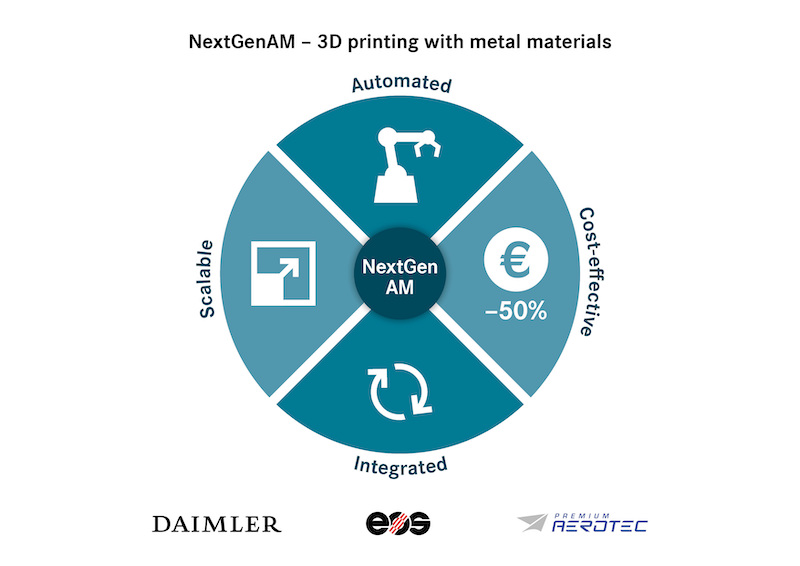Germany - Since May 2017, Daimler has been working with Premium Areotec and EOS to develop a production line that would be able to produce aluminium components by using 3D printing. The companies found that manufacturing costs can be reduced by approximately 50% when compared to existing 3D printing systems.
“Additive manufacturing is suitable for smallest-series production of new vehicles (limited editions),” commented Jasmin Eichler, head of future technologies at Daimler. “Systematic development of the parts specifically for 3D printing means that the production costs can be further reduced and the quality optimised. 3D printing also makes particular sense during the advance development of vehicles. The low numbers required can often be produced more cost-effectively, and faster, with additive manufacturing than with conventional production processes.”
The process that the companies developed is centred on a scalable, fully-automated additive production chain, from data preparation and central powder supply right up to the point when the printed parts are mechanically sawn off the build platform. The build process, heat treatment and quality assurance processes are all completed without any manual work.
Daimler has been developing 3D printing techniques for some time. It recently started making small replacement parts for its buses, and has been examining more ways of using 3D printing at its Centre of Competence.
Several other OEMs have been looking at ways to enhance 3D printing processes. General Motors, for example, recently announced it was using new generative design software technology to create parts that are then 3D printed for proof-of-concept, while Ford has examining potential use cases for production-ready parts made with additive manufacturing tools.






































